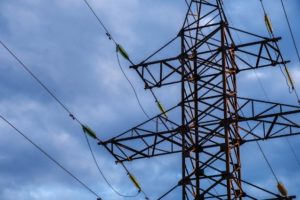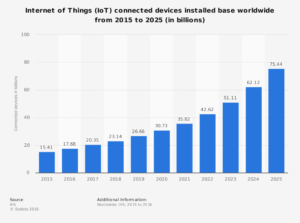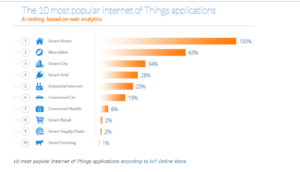How IoT Impacts our Daily Life
When I was young, my family and I traveled around the southwestern United States. While we were in Arizona, we went to visit something called, “The House of the Future.” It was a showcase house filled with automated devices that were run by the house’s computer system. The tenant was in complete control, able to make important decisions about their living environment, which were then executed by the home’s microcomputer system.
 Fast forward a few decades and that house is still there but seems more like a relic of the past yet, The House of the Future was on the cusp of a smart house age to come. Now that age has arrived. The Internet of Things (IoT) is here. I now work for a company, Zebulon Solutions, that works on all kinds of IoT devices, ranging from smart hockey pucks to 4000-pound smart transformers.
Fast forward a few decades and that house is still there but seems more like a relic of the past yet, The House of the Future was on the cusp of a smart house age to come. Now that age has arrived. The Internet of Things (IoT) is here. I now work for a company, Zebulon Solutions, that works on all kinds of IoT devices, ranging from smart hockey pucks to 4000-pound smart transformers.

According to Business Insider, “The Internet of Things, commonly abbreviated as IoT, refers to the connection of devices (other than typical fare such as computers and smartphones) to the Internet.” So, what does that mean? It means that the internet has become “link-able” to things like watches, cars, and kitchen appliances. Really almost anything with an on/off switch can be connected through a network of integrated circuit boards, sensors, and satellites. This connectivity allows massive amounts of data to be generated, monitored and utilized in real time. The potential of such interconnectivity is amazing, overwhelming and, let’s admit it, a little worrisome. By 2020 it is predicted that there will be between 30-50 billion devices connected to IoT.

So what impact does IoT have on you? On us? As individuals and families, businesses and communities, as a country and society? And how will IoT affect our future?
The daily impact is already here. Just look around. Most people own or use a device or a variety of devices daily that are considered part of the Internet of Things. Smartphones, fitness trackers, GPS and locating devices, smart speakers, remote security and home automation devices, etc. The list is long and continues to grow and evolve.
According to Forbes, 84% of the growing IoT applications will be dominated by a few main industries: Smart Cities (26%), Industrial IoT (24%), Connected Health (20%), and Smart Homes (14%). What do these numbers mean?
While it simplifies matters to be able to identify the IoT devices (http://iotlist.co) and applications that directly affect us each day, the rapid growth of IoT is having an even more profound impact on industries and businesses, which in turn will again impact us all. The graph below outlines how some of those industries will fit into the most popular markets.

Source: internetofthingonlinestore.com
We will continue to delve into all these areas in upcoming blogs, but for now let’s start with some of what IoT provides to any industry, company, individual or group.
- Easy access remotely
- Enable process monitoring and management
- Accurate prediction
- Easy transfer of data
Wearables are a good category to start with when discussing basic and common uses for devices and apps included in IoT. Let’s take a smartwatch for example. The watch is capturing your biometric readings. This may alert you to a possible illness (accurate prediction) since you just spent the holidays with all your nieces, nephews and cousins. Smart speakers are another good example. You can talk to a smart speaker and give it tasks to do such as read a recipe, turn down the thermostat, or turn on music (enable process monitoring and management) as you prepare dinner. We’ll use home automation and security sensors for our last example. Both types of devices allow you to monitor what is going on at your home (Who’s at the front door? Is there a leak in the basement?) even if you aren’t home (easy transfer of data and easy access remotely).
While some major concerns pop up here, performance is key. That is where Zebulon Solutions comes in. It’s great to be able to see who’s at your front door while you’re at work, but the doorbell’s main function, the simple, ding- dong needs to work. Not only that, but what was once a simple passive circuit now needs a microprocessor, a secure wireless link to your Wi-Fi network or a cellular tower, motion sensors and a video camera. All able to function on a cold winter night in Breckenridge or a steamy summer day in Baton Rouge. And it needs to be manufacturable, our real specialty. Let us help you develop your next IoT product and make it manufacturing-ready. To learn more, visit us at www.zebulonsolutions.com.
Stay tuned for upcoming blog posts where we will be discussing those concerns, along with how IoT will impact industries such as manufacturing, healthcare, and energy.
 Posted by Kirsten O’Donoghue
Posted by Kirsten O’Donoghue